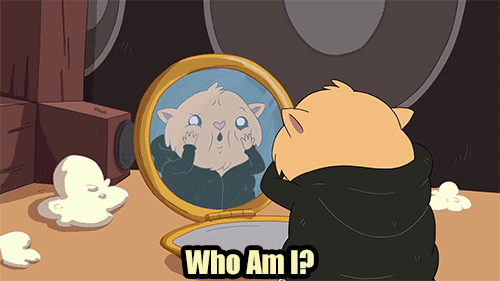In the past, identity has been discussed as a solid and singular idea, one that is stagnant and allusive. However, authors such as James Meese et al. (2015) now describe identity as “a product and a production that is never fixed in place for long”. Indeed, identity can be described as the traits and characteristics, social relations, roles and social group memberships that define who one is, and further make up one’s self-concept, or sense of self (Oyserman et al., 2012).

Personally, my authentic sense of self and identity is presented through the social media platform ‘TikTok’, a mobile video sharing and curation application. This app allows for my self-expression through its platform vernaculars, or “genres of participation” (Pennington, 2018) which allow for the categorisation of interests and engagement, resulting in a personalised experience. Unlike other social media platforms that I engage with, such as Instagram and Facebook, TikTok provides a platform for authentication and the stripping of curated personas.

Valkenburg and Piotrowski (2017), discuss the seven affordances of social media being “asynchronicity, identifiability, cue manageability, accessibility, scalability, replicability and retrievability”. Specifically, the affordance that TikTok offers me, which encourages my expression of self, is identifiability; being the ability to produce content that is linked to my true identity. The content I have on TikTok is mainly comedy but allows me to discuss current events in my life that are quite personal in a light-hearted and entertaining way. The affordance of accessibility results in my content reaching people that can relate to my videos, and similarly, I can access videos that other people are making that are relatable to me. It is through these interactions with those who are both similar and different to me that I am given the freedom to discover my sense of self and interact with the negotiations of mine and others identities (James Meese et al., 2015). Pennington (2018) discusses how social media is “increasingly where we go to process our inner thoughts and feelings about pretty much everything”. However, the informal and personalised nature of TikTok provides me with the comfort that my authenticity will be accepted, in comparison to other personified applications.
This liberatory space that provides the affordance of self-discovery also offers me a non-discriminatory audience that watches me grow. My current 7k followers on the platform are from all over the world, residing in countries such as Australia, the US, UK, New Zealand and Canada, according to my TikTok analytics. This international audience demonstrates the non-confining nature of my social presence, having no specific target audience other than those that enjoy my non-selective content.

TikTok’s accepting community offers affordances that differ from other social media platforms as there is no need to filter one’s self or curate a particular persona (unless you want to). It is thereby for this reason that I attribute my self-growth, partly towards this platform, as it provides me with a non-judgemental community allowing me to develop my sense of self outside of hyper-mediated environments.
P.S. Remember to Keep it Sweet xo
References:
Messe, J., Gibbs, M., Carter, M., Arnold, M., Nansen, B. and Kohn, T., 2015. Selfies at Funerals: Mourning and Presencing on Social Media Platforms. International Journal of Communication, [online] 9, pp.1818–1831.
Oyserman, D., Elmore, K. and Smith, G., 2012. Handbook Of Self And Identity. 2nd ed. New York: The Guilford Press.
Pennington, R., 2018. Social media as third spaces? Exploring Muslim identity and connection in Tumblr. International Communication Gazette, 80(7), pp.620-636.
Valkenburg, P. and Piotrowski, J., 2017. Plugged In: How Media Attract And Affect Youth. New Haven: Yale University Press, pp.218-243.